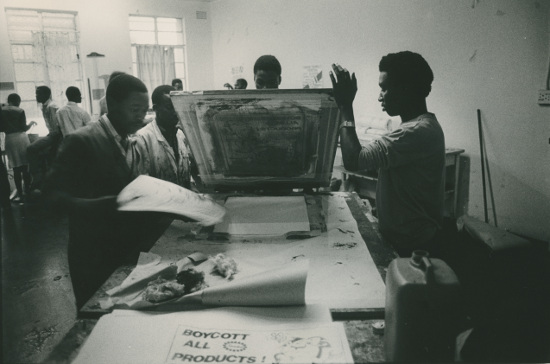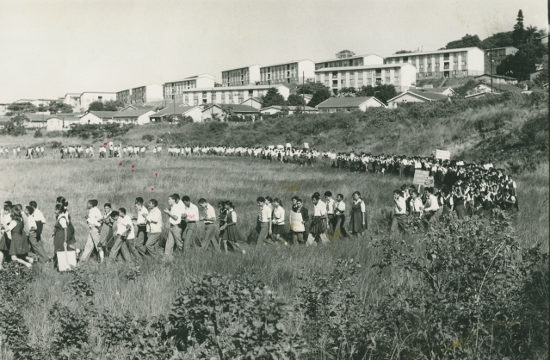 As the school boycotts continued and the militant youth took to the streets to fight running battles with the security forces, there was growing concern among parents and educators that a whole generation of young people were growing up uneducated. Militant youth were focused on their anger against the apartheid system and viewed the struggle as more important then their education. The rallying cry was: ‘Liberation Now, Education Later!’ However, without schooling, the youth had limited prospects for the future. The most they could hope for would be work as unskilled, cheap labour; the worst the spectre of unemployment.
As the school boycotts continued and the militant youth took to the streets to fight running battles with the security forces, there was growing concern among parents and educators that a whole generation of young people were growing up uneducated. Militant youth were focused on their anger against the apartheid system and viewed the struggle as more important then their education. The rallying cry was: ‘Liberation Now, Education Later!’ However, without schooling, the youth had limited prospects for the future. The most they could hope for would be work as unskilled, cheap labour; the worst the spectre of unemployment.
In an attempt to deal with the crisis in schools, groups of concerned parents, teachers and students came together in December 1985 and formed the National Consultative Conference (NCC). This conference was organised by the Soweto Parents Crisis Committee, which was formed to deal with the education crisis.
The Conference put forward political demands to the government such as the unbanning of COSAS, the withdrawal of troops from the townships and the release of students and teachers from detention. But it also called for students to return to school and to work for change from within. And the way to do this would be through People’s Education.

In 1986 the National Education Crisis Committee (NECC) was formed. The NECC urged students and teachers to challenge the system of education from within the schools, and to use knowledge and skills to empower students to fight apartheid. It proposed the introduction of a more relevant form of education called ‘People’s Education’ and developed alternative teaching materials to counter the apartheid ideology inherent in the curriculum.
Thus, while it supported students’ political demands, the NECC also tried to get students to go back to school. They also believed that youth activism could be more easily controlled and coordinated in schools. It put forward alternative slogans such as ‘People’s Education for People’s Power’ and ‘Education for liberation’ and suspended the school boycott.
The vision of ‘People’s Education’ captured the imagination of the students The NECC was later banned and many of its leaders detained.
Exhibitions in the classroom
Visualising the past
Look at the different slogans that emerged around education during the school boycotts.
- What were people trying to achieve with these different slogans?
- Imagine that you were a student during this time. Which slogan would you find the most appealing? Explain your answer.
- Write your own slogan that addresses the education crisis that exists in schools today.


